Recently published by Rutgers University Press is Desegregating Comics – Debating Blackness in the Golden Age of American Comics, edited by Qiana Whitted.
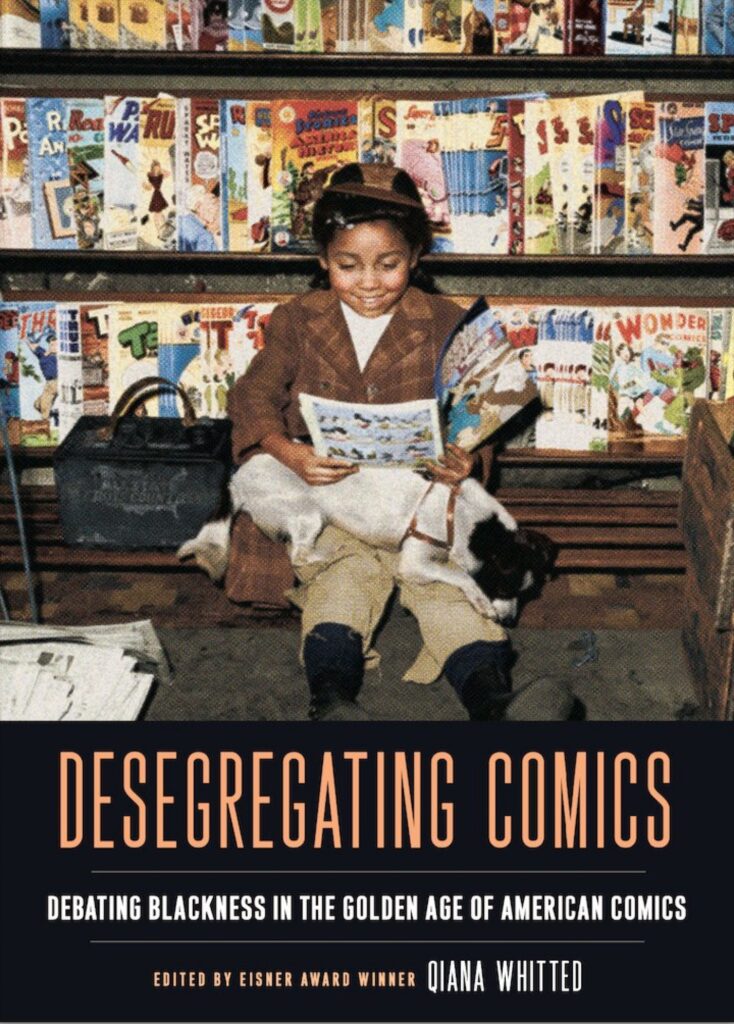
Some comics fans view the American comic industry’s Golden Age (1930s-1950s) as a challenging time when it comes to representations of race, an era when the few Black characters appeared as brutal savages, devious witch doctors, or unintelligible minstrels. Yet the true portrait is more complex and reveals that even as caricatures predominated, some Golden Age comics creators offered more progressive and nuanced depictions of Black people, as illustrated in the 15 essays in this new book.
Desegregating Comics assembles a team of leading scholars to explore how debates about the representation of Blackness shaped both the production and reception of Golden Age comics. Some essays showcase rare titles like Negro Romance and consider the formal innovations introduced by Black comics creators like Matt Baker and Alvin Hollingsworth, while others examine the treatment of race in the work of such canonical cartoonists as George Herriman and Will Eisner.
The collection also investigates how Black fans read and loved comics, but implored publishers to stop including hurtful stereotypes. As this book shows, Golden Age comics artists, writers, editors, distributors, and readers engaged in heated negotiations over how Blackness should be portrayed, and the outcomes of those debates continue to shape popular culture today.
Edited by Qiana Whitted, Desegregating Comics features contributions by Ian Gordon, Nicholas Sammond, Andrew J. Kunka, Rebecca Wanzo, Chris Gavaler, Monalesia Earle, Blair Davis, Eli Boonin-Vail, Carol L. Tilley, Qiana Whitted, Brian Cremins, Mora Beauchamp-Byrd, Phillip Lamarr Cunningham, Jacque Nodell, Julian C. Chambliss, and Mike Lemon.
“I am so proud of the 15 incredible essays in this volume,” Qiana noted earlier this year on Twitter. “Each explores a different aspect of how race and blackness were negotiated in comic books, comic strips, and editorial cartoons from the turn of the 20th century through the 1950s.
“Scholars such as Lara Saguisag and Rebecca Wanzo have already been doing important research on the stereotypical portrayals of Black people in early comics, with Wanzo noting: ‘Racist caricature was thus not a side note to US cartooning’s emergence. It was central to it.’
“Desegregating Comics adds to the discussion by focusing on the complex narrative and aesthetic landscape of Golden Age comics, including early creators who experimented with ways to portray Black lives in a medium deeply connected to legacies of racist objectification.
“Of course, the Black Press has a long history of using comics to counter racist images with social/political critique. Even as far back as 1901, editors in The Colored American newspaper were calling for their own cartoonists. In another example, Chicago Defender staff artist Garrett Whyte used his post-World War Two comic strip “Mr. Jim Crow” to satirise “the ineptitude of segregation.”
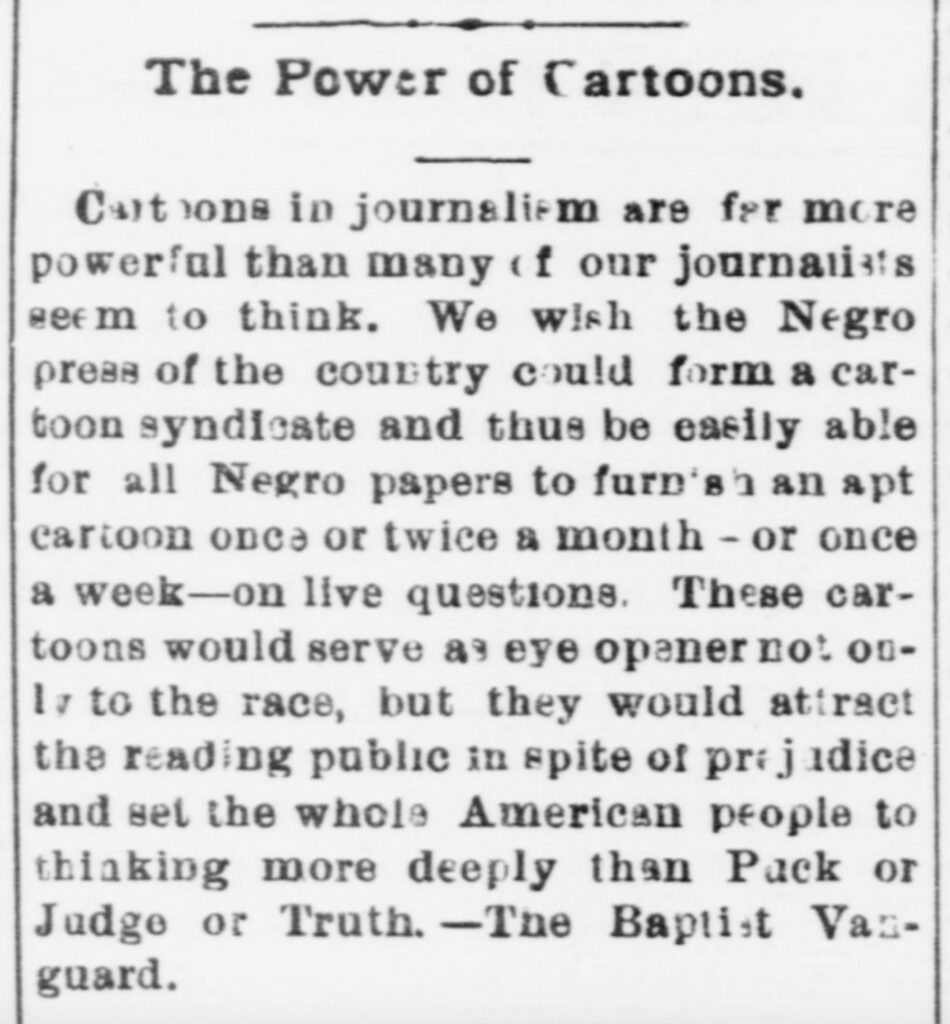
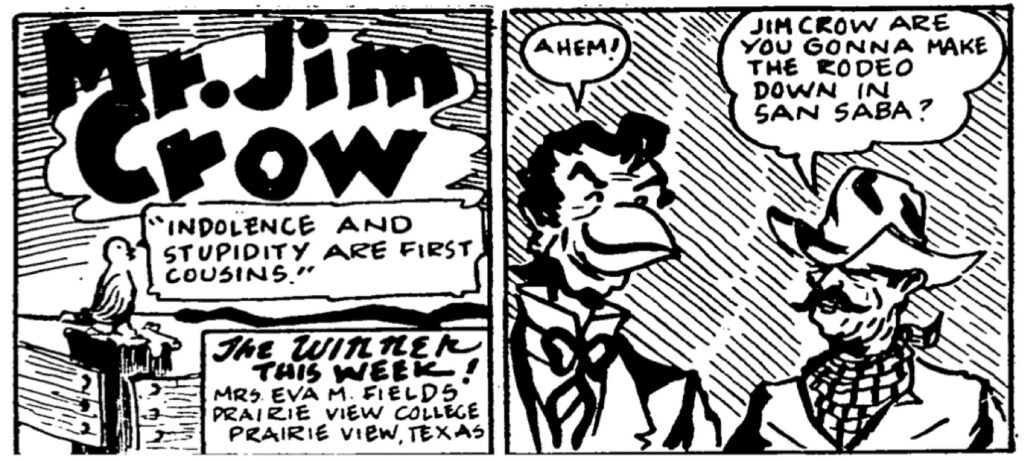
“The first section of Desegregating Comics features essays by Ian Gordon, Nic Sammond, and Andy Kunka that grapple with the historical significance of early racist imagery and the limits of symptomatic readings in comics by Rose O’Neill, George Herriman, and Will Eisner. Formal innovation and craft are the second section’s focus. How did early Black artists Matt Baker, Al Hollingsworth, Jackie Ormes, and Romare Bearden play with line, texture, layout? Amazing essays by Chris Gavaler, Monalesia Earle, Blair Davis, Eli Boonin-Vail, and Wanzo.
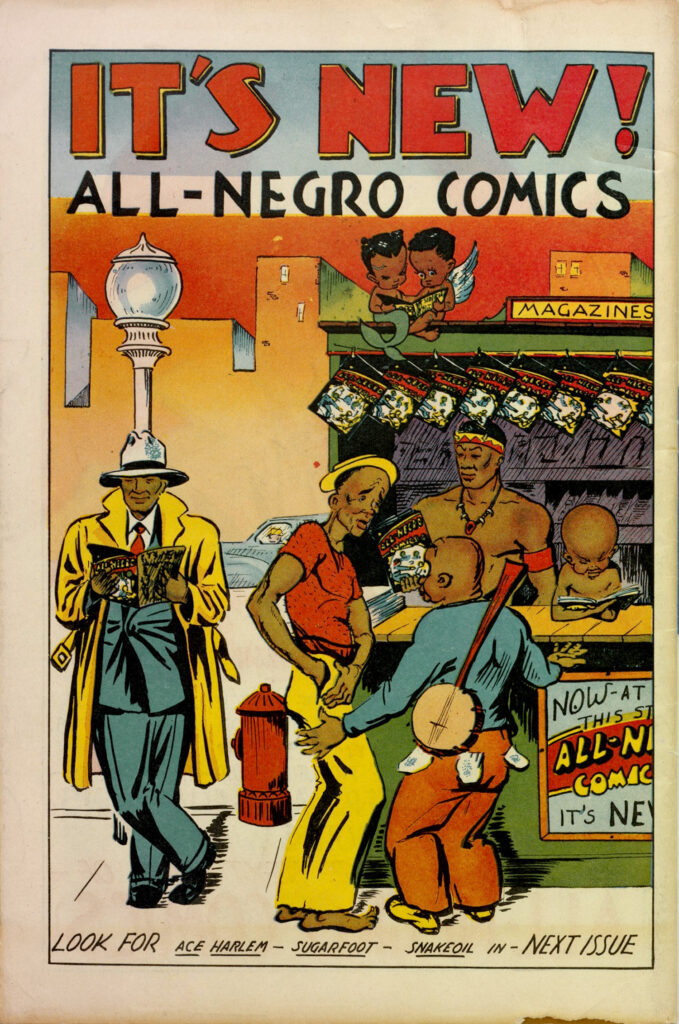
“The third section by Brian Cremins, Carol Tilley, and Mora Beauchamp-Byrd considers how comics from the 1940s and 50s featuring Black characters were shaped by the ardent interests and vocal concerns of Black readers/creators. My essay on All-Negro Comics is here too.
“The collection ends strong with a fourth section on genre comics and how different storytelling conventions affect the way blackness is conveyed. Examined are jungle comics (by Phillip Cunningham); romance (Jacque Nodell); sci-fi (Julian Chambliss); and westerns (Mike Lemon).”
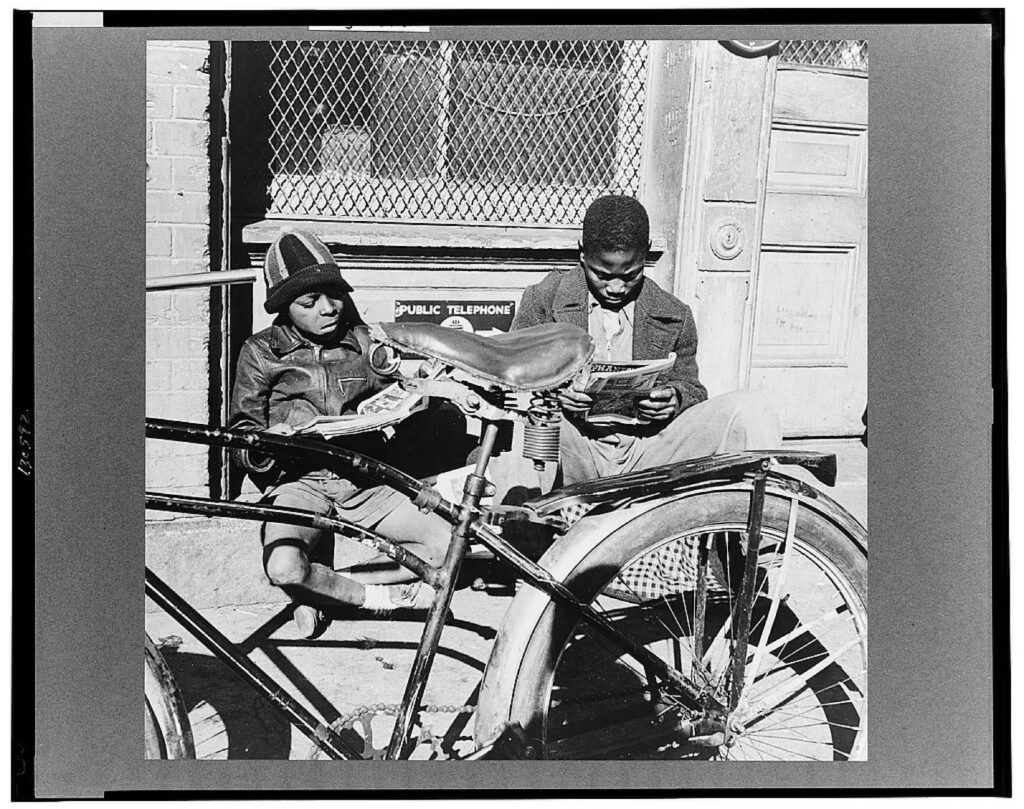
Qiana thanks Carol Tilley for her invaluable research on young Black comics readers from the mid-20th century for this project. Along with her essay, Carol has put together a supplemental bibliography of sources to share with the public.
“Taken together, the essays in Desegregating Comics speak to the reality of a different, more dynamic kind of comics newsstand, not unlike the one imagined in All-Negro Comics from 1947 (or the actual one in the Teenie Harris photo on our cover, taken that same year),” says Qiana. “I hope that you’ll pick up the collection, use it as a resource, and keep this conversation going.”
• Desegregating Comics is available now | ISBN 978-1978825017 | Buy it from AmazonUK (Affiliate Link)
The founder of downthetubes, which he established in 1998. John works as a comics and magazine editor, writer, and on promotional work for the Lakes International Comic Art Festival. He is currently editor of Star Trek Explorer, published by Titan – his third tour of duty on the title originally titled Star Trek Magazine.
Working in British comics publishing since the 1980s, his credits include editor of titles such as Doctor Who Magazine, Babylon 5 Magazine, and more. He also edited the comics anthology STRIP Magazine and edited several audio comics for ROK Comics. He has also edited several comic collections, including volumes of “Charley’s War” and “Dan Dare”.
He’s the writer of “Pilgrim: Secrets and Lies” for B7 Comics; “Crucible”, a creator-owned project with 2000AD artist Smuzz; and “Death Duty” and “Skow Dogs” with Dave Hailwood.
Categories: Books, Comics, Creating Comics, downthetubes Comics News, downthetubes News, US Comics
 Prince Valiant Artists illustrators Special #19 Limited Edition announced
Prince Valiant Artists illustrators Special #19 Limited Edition announced  Book bans and censorship attempts soar in United States, including graphic novels
Book bans and censorship attempts soar in United States, including graphic novels  Coming Soon: The Life and Art of Mort Walker
Coming Soon: The Life and Art of Mort Walker  Latest Journey Planet ‘zine dives deep into The American War in Vietnam
Latest Journey Planet ‘zine dives deep into The American War in Vietnam